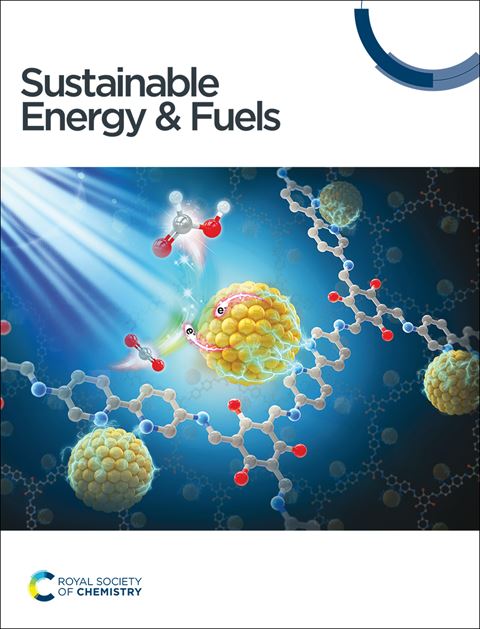Techno-economic analysis of a solar-driven biomass pyrolysis plant for bio-oil and biochar production
IF 5
3区 材料科学
Q2 CHEMISTRY, PHYSICAL
引用次数: 0
Abstract
Pyrolysis has become one of the most attractive options to convert carbonaceous biomass into bio-oil or biochar. This paper explores a novel solar pyrolysis process intended to produce both bio-oil and biochar, to improve carbon efficiency. Aspen Plus and SolarPILOT were used to model a 10 MW biomass pyrolysis plant thermally sustained by hot particles from a falling-particle solar tower receiver. Yearly analysis was carried out for three configurations to estimate the annual production of oil and biochar. Results showed that the hybrid plant, combining solar receiver and biochar backup combustor, leads to the lowest cost of bio-oil (18.7 €/GJ, or 0.29 €/kg) and to a carbon efficiency of 83%. On the other hand, the plant fully sustained by solar power achieves a carbon efficiency of 90%, but a significantly higher cost of bio-oil (21.8 €/GJ, or 0.34 €/kg) due to the larger size of particle storage and due to lower capacity factor of the pyrolysis plant. In comparison, a conventional pyrolysis plant with no biochar production resulted the most expensive option in term of cost of produced bio-oil (27.5 €/GJ) and features the lowest carbon efficiency (74%). Sensitivity analysis shows that the pyrolyzer Capex, operational cost, biochar market price, plant availability and discount rate have significant impact on bio-oil production cost.太阳能驱动生物质热解厂生产生物油和生物炭的技术经济分析
热解已成为将含碳生物质转化为生物油或生物炭的最有吸引力的选择之一。本文探讨了一种新型太阳能热解工艺,旨在同时生产生物油和生物炭,以提高碳效率。Aspen Plus 和 SolarPILOT 被用来模拟一个 10 兆瓦的生物质热解工厂,该工厂的热量由来自太阳能落塔接收器的热颗粒维持。对三种配置进行了年度分析,以估算油和生物炭的年产量。结果表明,将太阳能接收器和生物炭备用燃烧器相结合的混合式工厂生物油成本最低(18.7 欧元/GJ,或 0.29 欧元/kg),碳效率达到 83%。另一方面,完全依靠太阳能发电的工厂的碳效率达到 90%,但生物油的成本(21.8 欧元/千焦,或 0.34 欧元/千克)却高得多,原因是颗粒存储量较大,热解工厂的产能系数较低。相比之下,不生产生物炭的传统热解设备生产的生物油成本最高(27.5 欧元/GJ),碳效率最低(74%)。敏感性分析表明,热解器资本支出、运营成本、生物炭市场价格、工厂可用性和贴现率对生物油生产成本有重大影响。
本文章由计算机程序翻译,如有差异,请以英文原文为准。
求助全文
约1分钟内获得全文
求助全文
来源期刊

Sustainable Energy & Fuels
Energy-Energy Engineering and Power Technology
CiteScore
10.00
自引率
3.60%
发文量
394
期刊介绍:
Sustainable Energy & Fuels will publish research that contributes to the development of sustainable energy technologies with a particular emphasis on new and next-generation technologies.
文献相关原料
| 公司名称 | 产品信息 | 采购帮参考价格 |
|---|
 求助内容:
求助内容: 应助结果提醒方式:
应助结果提醒方式:


